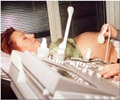Diagnosis and Treatment of Neonatal Abstinence Syndrome
Neonatal Abstinence Syndrome is diagnosed with Neonatal Abstinence Syndrome scoring system, Urine analysis and Meconium analysis. Treatment involves management of withdrawal symptoms, feeding issues and monitoring weight gain.
Tests to diagnose Neonatal Abstinence Syndrome:
- Neonatal Abstinence Syndrome scoring systems – These scoring systems allots point to each symptom the baby presents with depending upon its severity. The over all score decides the necessity for treatment.
- Meconium analysis –Meconium is the first stool passed by the baby. It is the best method for detection of the drug used.
- Urine analysis – Urineanalysis is also a widely used method for detection of drug exposure in the newborn, as it contains higher concentrations of the drug in comparison with the blood.
- Hairanalysis – This test is not commonly used as it is expensive. But thesample collection is very easy and can be done up to 3 months after birth.
Treatment of Neonatal Abstinence Syndrome depends upon the following factors:
- General condition of the infant
- Severity of the withdrawal symptoms
- Feeding and weight gain issues
- Preterm or full term baby
Measures to treat baby with neonatal abstinence syndrome:
- Frequent, small portions of high calorie formula feeds are given for children who present with problems of feeding and weight gain. This helps with the nutrition of the baby.
- Intravenous fluids are considered in case of severe vomiting in a dehydrated infant.
- Children with neonatal abstinence syndrome are often irritable and fussy. Onecan follow these steps to calm the baby:
- Switching off the lights and keeping a low noise or calm environment around them
- Minimizing handling the baby and use of pacifiers
- Gentle rocking and swaddling also helps.
- If these measures do not ease the situation, drug therapy would be required. Morphine or methadone are commonly used in treating this condition. However, the choice drug to be used depends on the substance used by the mother during her pregnancy.







